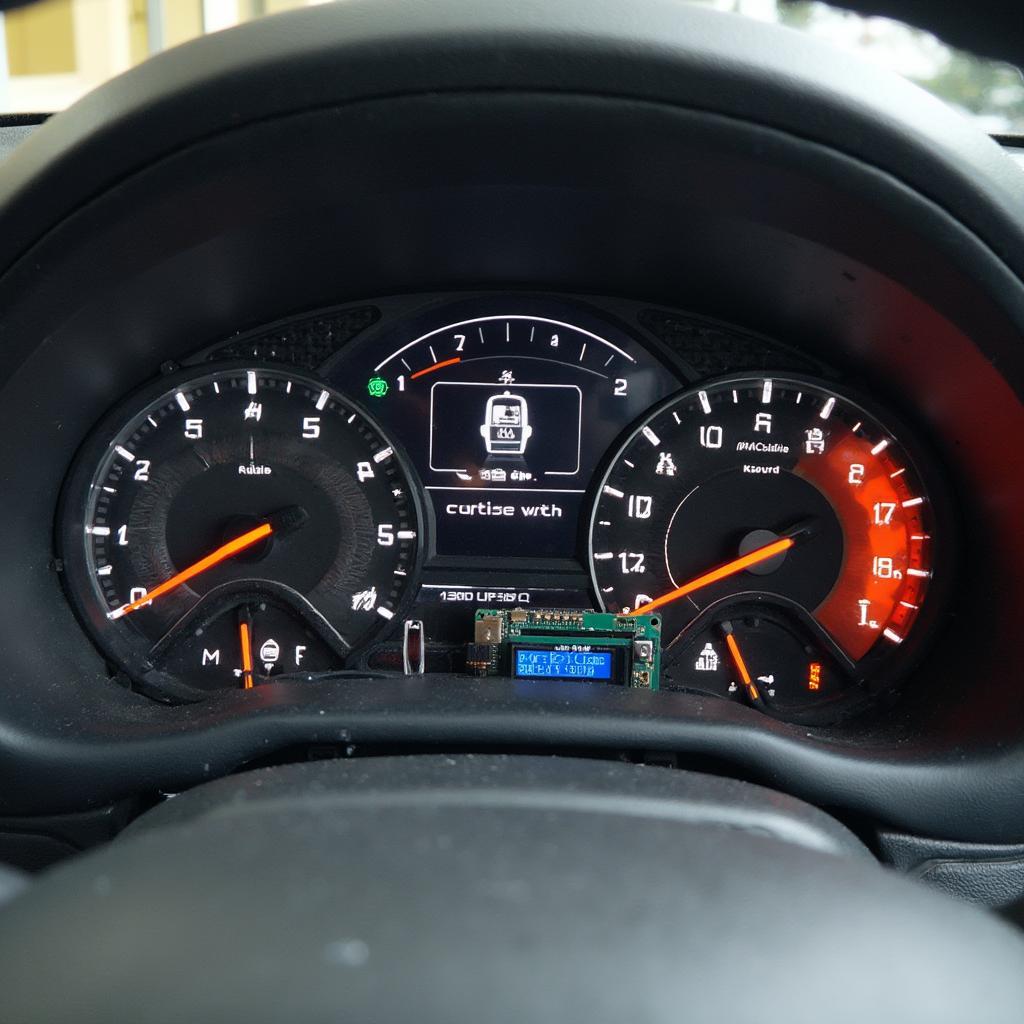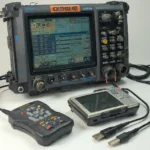Connecting your Arduino to a vehicle’s OBD2 port opens up a world of possibilities for DIY projects, diagnostics, and data logging. Using an Arduino CAN bus shield OBD2 allows you to tap into the vehicle’s communication network and access a wealth of information. This article will explore the exciting world of Arduino CAN bus shield OBD2, covering everything from choosing the right hardware to decoding cryptic data.
Using an Arduino CAN bus shield with OBD2 allows hobbyists and professionals alike to delve into the inner workings of their vehicles. This article will equip you with the knowledge and resources to embark on your own OBD2 projects. Check out our guide on the best obd2 display for visualizing your data.
Understanding the Basics of Arduino CAN Bus Shield OBD2
CAN bus (Controller Area Network) is a robust communication system used in modern vehicles to allow various electronic control units (ECUs) to communicate with each other. OBD2 (On-Board Diagnostics, second generation) is a standardized system that provides access to vehicle diagnostic data. Combining an Arduino with a CAN bus shield and OBD2 connectivity allows you to read and interpret this data.
Choosing the Right Arduino CAN Bus Shield
Selecting the correct CAN bus shield is crucial for a successful project. Consider factors like compatibility with your Arduino board (Uno, Mega, Nano), CAN bus speed, and available libraries. The MCP2515-based shields are popular choices for their affordability and ease of use. Other options include the CAN-BUS Shield with an SN65HVD230 transceiver, offering improved performance for higher baud rates.
Connecting the Hardware
Connecting your Arduino CAN bus shield OBD2 is relatively straightforward. The shield typically connects to the SPI pins on the Arduino and requires a 12V power supply from the vehicle’s OBD2 port. Make sure to connect the CAN High (CANH) and CAN Low (CANL) pins to the corresponding pins on the OBD2 connector.
Decoding OBD2 Data with Your Arduino
Once the hardware is connected, you can start reading data from the vehicle’s OBD2 port. This requires using specific OBD2 commands, or PIDs (Parameter IDs), to request information from the ECUs. Each PID corresponds to a specific data point, such as engine speed, coolant temperature, or fuel level.
Utilizing OBD2 Libraries
Several Arduino libraries simplify the process of sending and receiving OBD2 data. The OBD2 library provides a user-friendly interface for interacting with the OBD2 protocol. Using these libraries allows you to focus on interpreting the data rather than the low-level communication details.
What are the popular Arduino OBD2 libraries? Popular libraries include the OBD2 library and the CAN-BUS library.
Working with CAN Frames
OBD2 data is transmitted in CAN frames, which are structured packets of information. Understanding the structure of CAN frames is essential for decoding the raw data received from the vehicle. Each frame contains an identifier, data length, and the actual data bytes.
Why are CAN frames important? CAN frames ensure reliable data transmission in the noisy automotive environment.
Advanced Applications and Considerations
Beyond basic data retrieval, an Arduino CAN bus shield OBD2 setup can be used for advanced applications such as data logging, custom dashboards, and even controlling certain vehicle functions. However, it is important to exercise caution when modifying vehicle systems, as improper modifications can damage the vehicle or create safety hazards. Explore arduino obd2 can bus for more insights.
Power Management and Safety
Ensure proper power management to protect both your Arduino and the vehicle’s electrical system. Use appropriate fuses and avoid drawing excessive current from the OBD2 port. For more details on working with OBD2 on Arduino, check our arduino can bus obd2 guide.
How do I ensure safe OBD2 projects? Always disconnect the battery’s negative terminal before working on any automotive electronics.
 Arduino CAN Bus Shield OBD2 Advanced Project
Arduino CAN Bus Shield OBD2 Advanced Project
Conclusion
Arduino CAN bus shield OBD2 offers a powerful and versatile platform for exploring the world of automotive electronics. By understanding the basics of CAN bus communication, selecting the appropriate hardware, and utilizing available libraries, you can unlock a wealth of information from your vehicle and create exciting DIY projects. Remember to prioritize safety and proper power management when working with automotive electronics. You might find our obd2 scanner arduino instructable helpful. For coding examples, refer to our arduino obd2 sketch resource.
FAQ
- What is the purpose of a CAN bus shield?
- How do I connect an Arduino to a car’s OBD2 port?
- What are OBD2 PIDs?
- Which Arduino libraries are useful for OBD2 projects?
- What are the safety precautions when working with car electronics?
- Can I log data from the OBD2 port using an Arduino?
- Where can I find more information about CAN bus communication?
Feel free to reach out to our team for further assistance. You can contact us via WhatsApp: +1(641)206-8880 or Email: [email protected]. We offer 24/7 customer support.
